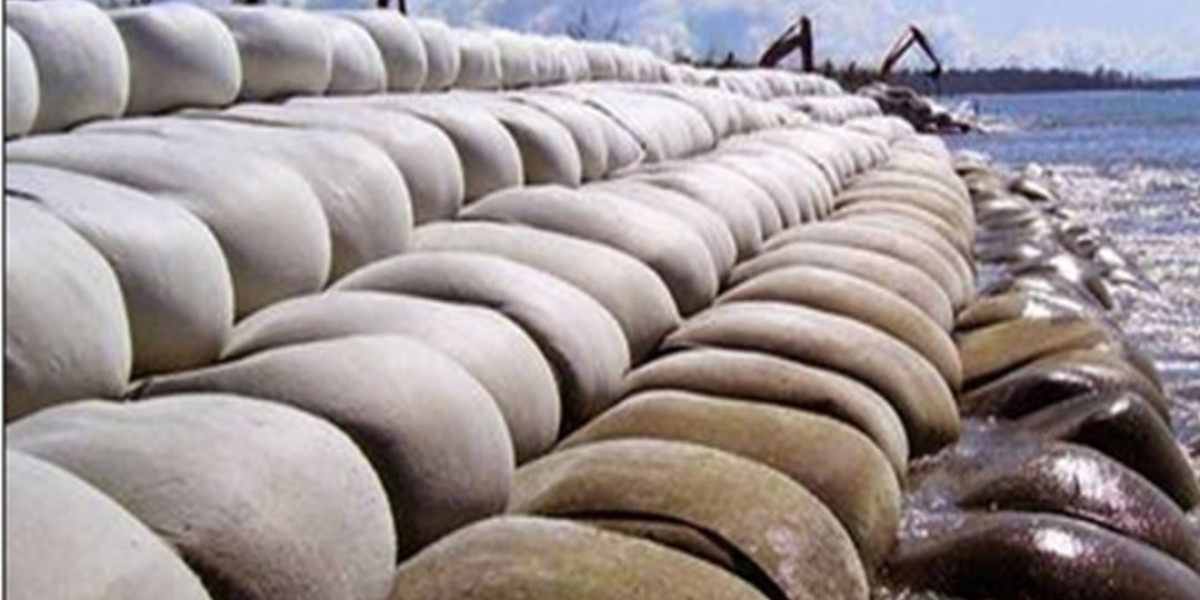It is a technique that improves the soil’s strength and durability, making it more suitable for construction activities, landscaping, and even road building. Over time, various methods for soil stabilization have emerged, with one of the most innovative being the use of Geotextile Bags Price. These bags, made from high-strength fabric materials, are increasingly used due to their effectiveness and cost-efficiency. By understanding their application, benefits, and costs, we can see how geotextile bags have revolutionized soil stabilization across various sectors.
What are Geotextile Bags?
Geotextile bags are specially designed bags made from permeable, non-woven, or woven geotextile fabrics. They are used to reinforce and stabilize soil in numerous applications, from erosion control to construction projects. The material used in the production of geotextile bags is durable enough to withstand external forces while being permeable enough to allow water to pass through without damaging the structure. These bags can be filled with different materials, such as sand, soil, or gravel, depending on the specific requirement of the stabilization project. The combination of fabric strength and appropriate filling material provides excellent results in reinforcing soil and preventing erosion.
Applications of Geotextile Bags in Soil Stabilization
The application of geotextile bags in soil stabilization is diverse and versatile. One common application is in the construction of embankments and slopes, where geotextile bags help to prevent soil erosion. They are also used to stabilize soil in areas prone to shifting, such as riverbanks, coastal areas, or roadsides. In these locations, geotextile bags act as a barrier, holding the soil in place and reducing the risk of landslides or washouts. Additionally, these bags are utilized in drainage systems where they allow for proper water flow while supporting the structure.
Geotextile bags are also beneficial in reinforcing roadbeds and railroads. By laying geotextile bags filled with sand or gravel, the weight of traffic and trains is distributed more evenly, reducing the risk of settlement or deformation. In agricultural sectors, these bags can help prevent soil erosion in farmlands, stabilizing the soil and improving crop yields by maintaining a level surface for planting. Whether in construction or agriculture, geotextile bags provide a long-term solution to soil instability.
Advantages of Using Geotextile Bags for Soil Stabilization
There are numerous advantages to using geotextile bags for soil stabilization. One of the primary benefits is their ability to provide immediate stabilization and reinforcement. Unlike traditional soil stabilization methods, such as chemical treatments or mechanical compaction, geotextile bags can be quickly deployed, reducing project timelines. This rapid installation makes them ideal for projects with tight schedules or in emergency situations, such as flood control or landslide prevention.
Another key advantage of geotextile bags is their cost-effectiveness. These bags are relatively inexpensive compared to other soil stabilization methods, such as concrete or steel reinforcements. Additionally, the durability of geotextile fabrics ensures that the bags have a long lifespan, which further reduces the need for frequent repairs or replacements. Furthermore, geotextile bags are lightweight and easy to handle, making them easier to transport and install, even in remote locations.
Environmental sustainability is another significant advantage of geotextile bags. These bags are often made from recyclable materials, and their ability to allow water flow reduces the risk of waterlogging and adverse environmental effects. Moreover, since geotextile bags help stabilize soil without the need for harmful chemicals, they provide an environmentally friendly solution to soil erosion and instability.
Factors Influencing the Price of Geotextile Bags
The price of geotextile bags can vary depending on several factors. One key determinant is the type of fabric used to manufacture the bags. High-quality materials, such as polyester or polypropylene, tend to be more expensive but offer greater durability and strength. The thickness and weave of the fabric also play a role in determining the cost. Bags with a higher density and a more intricate weave structure are generally priced higher due to the added strength and longevity they provide.
Another factor that affects the price is the size and volume of the geotextile bags. Larger bags or those filled with specific materials, such as Sand Bags For Construction or gravel, will generally cost more than smaller, empty bags. Additionally, the location of purchase can influence the price due to shipping and handling costs. Geo Bags Manufacturers In India offer competitive pricing, but it's important to compare costs from different suppliers to ensure the best deal.
The quantity of geotextile bags purchased can also impact the price. Bulk purchases often come with discounted rates, as suppliers are able to offer lower prices for larger orders. However, even with the varying prices, geotextile bags remain an affordable option compared to traditional methods of soil stabilization, making them an attractive choice for both small and large-scale projects.
The Role of Sand Bags in Construction and Soil Stabilization
Sand bags are often used in conjunction with geotextile bags to enhance soil stabilization efforts. Sand bags for construction are typically used to reinforce foundations, prevent erosion, and support embankments. When filled with sand, these bags act as a natural barrier, providing both weight and stability to the soil. Their flexibility allows them to conform to the shape of the land, making them particularly useful for irregular terrain.
In addition to their use in soil stabilization, sand bags are also commonly employed in flood control projects. By strategically placing sand bags around vulnerable areas, such as riverbanks or construction sites, the risk of flooding and soil erosion can be significantly reduced. The permeable nature of geotextile fabrics allows water to flow through the bags while maintaining the integrity of the soil structure, making sand bags an effective solution for both short-term and long-term stabilization.
Installation and Maintenance of Geotextile Bags
Installing geotextile bags for soil stabilization is a relatively simple process that can be carried out with minimal equipment and labor. The first step is to determine the specific needs of the project, including the type of geotextile material, the size of the bags, and the filling material. Once these factors are decided, the bags can be filled with the appropriate material, such as sand, soil, or gravel. The bags are then placed in the desired location, either by hand or using machinery for larger projects.
Proper installation is key to ensuring the effectiveness of geotextile bags. The bags should be stacked or arranged in a way that provides maximum support to the soil and prevents shifting. In some cases, the bags may need to be sewn together to create larger structures, such as embankments or barriers. Regular maintenance is also necessary to ensure the long-term stability of the bags. Inspections should be conducted periodically to check for signs of wear or damage, and repairs or replacements should be made as needed.
Conclusion
In conclusion, geotextile bags are an efficient and cost-effective solution for soil stabilization. Their versatility, durability, and environmental benefits make them an ideal choice for a wide range of applications, from construction to agriculture. Whether used for erosion control, reinforcement of embankments, or flood protection, geotextile bags provide a reliable and sustainable method for stabilizing soil and preventing damage. The growing demand for these bags, particularly in regions like India, has led to the rise of numerous Geo Bags Manufacturers In India, offering competitive prices and high-quality products. For anyone seeking a cost-effective, environmentally friendly, and reliable solution to soil instability, geotextile bags are an excellent choice.
Frequently Asked Questions
What materials can be used to fill geotextile bags?
Geotextile bags can be filled with various materials, including sand, gravel, soil, and even small rocks, depending on the requirements of the project. The choice of filling material affects the bag’s weight, stability, and permeability.How long do geotextile bags last?
The lifespan of geotextile bags depends on factors such as the type of fabric, the environment, and the level of wear and tear. Typically, geotextile bags made from high-quality materials can last several years, even in harsh conditions.Are geotextile bags environmentally friendly?
Yes, geotextile bags are environmentally friendly as they are often made from recyclable materials. Their permeable nature allows for water flow, preventing waterlogging and supporting natural drainage systems.What is the cost of geotextile bags?
The cost of geotextile bags varies based on the material, size, and quantity purchased. However, geotextile bags are generally more affordable than traditional soil stabilization methods, making them a cost-effective option for construction and other projects.







